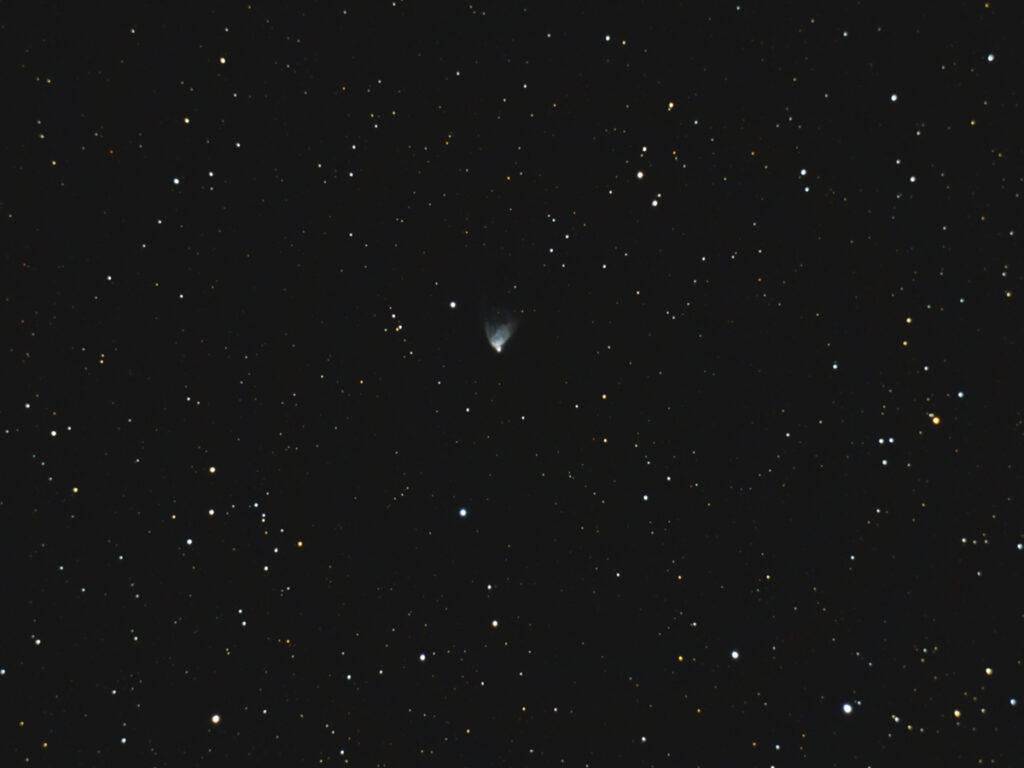
Telescope: 8” Meade Wide Field LX200GPS @ f/6.3 (Native), altaz mode
Camera: ZWO ASI 294MC, Baader Mk III MPCC
Filter: GSO IR Blocking Filter
Guide scope: None
Exposure: 2,020x1sec, Gain 400, saved as TIFF
Darks: None
Flats: Synthetic
Average Light Pollution: Red zone, Bortle 8, fair transparency, bright moonlight
Lensed Sky Quality Meter: 18.2
Stacking: SharpCap Pro, real-time
White Balance: Nebulosity Automatic
Software: SharpCap Pro, Nebulosity, Photoshop
Hubble’s Variable nebula is a small, bright, fan-shaped reflection nebula in Monoceros (the Unicorn). The bright tip of the nebula is not just a star, but a dense nebula hiding a binary star system at its core (R Mon). Clouds of dust are believed to orbit this system, casting shadows up onto the veil causing the overall brightness of the nebula to vary. Time lapse sequences spanning weeks of time show the shadows sweeping across the veil.
In some ways this is the most remarkable image. I set my gear up to continue testing this system for remote observing using short exposures (0.5-5 seconds) either in live view or live stacking in SharpCap Pro. I had to step away for a while, so I left the system pointing at NGC 2261 with SharpCap Pro live stacking 1 second exposures. When I came back I found that it was happily stacking away passing through 2,000 frames. The image on the screen looked fantastic, so I had it save the screen as-shown as a TIFF, and finished it off in Nebulosity and Photoshop. This is evolving into a very powerful remote observing and imaging system and I’ll probably be using it a lot more in the future.
NGC 2261 is currently well placed in the evening sky rising in the east as the as the sky darkens.
Recent Comments